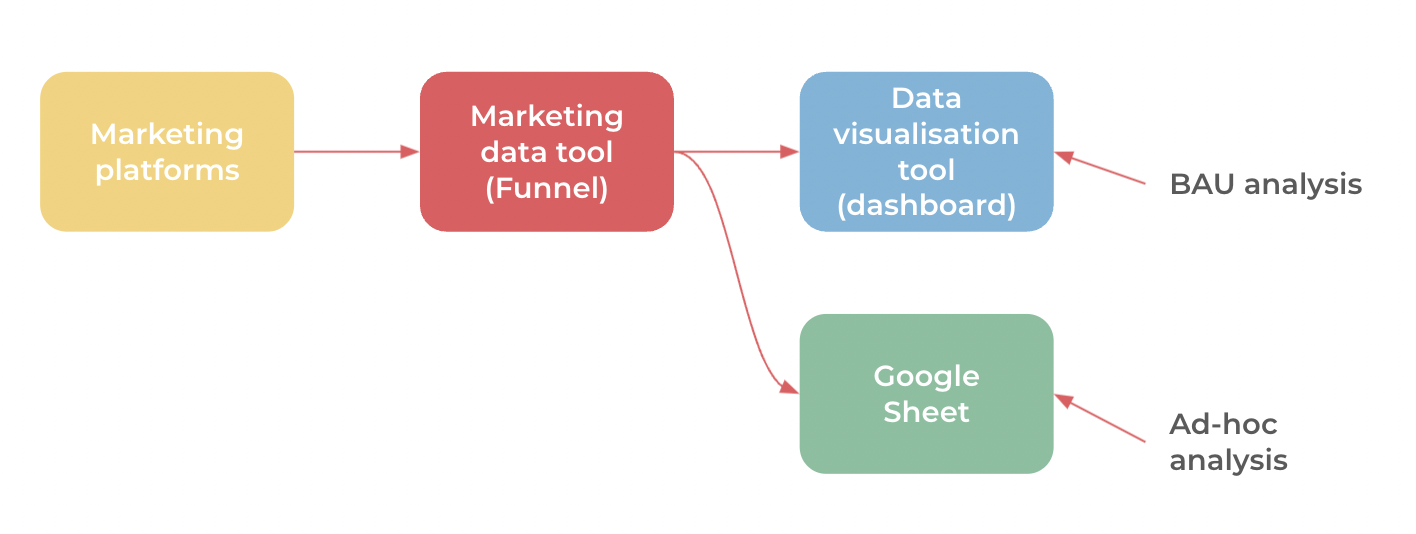Dashboards have three primary purposes: communicating, understanding, and analyzing data. The rule we like to go by is to create a dashboard if you intend to do something regularly, which means daily, weekly, or monthly.
A potential exception here could be those one-off questions you want to answer, your ad-hoc analysis. But it also pays off to have the data in a ready state to be analyzed somewhere, even if it’s just ad-hoc.
We’ll run through some scenarios where you should have a dashboard.
Learn about:
- The purpose of dashboards
- Why you might need one for your marketing
- How to get your marketing data quickly into a dashboard tool
When to have a marketing dashboard
As we mentioned, you’ll want to have a dashboard ready to go for any KPIs and metrics that you’re regularly measuring.
You’ll probably need a daily or weekly dashboard that is a bit more granular than what you would have for your monthly one. These marketing dashboards are for the practitioner, you. Its purpose is to provide you with indicators of what needs to be adjusted. It should allow you to spot trends and anomalies and dive deeper into those with the dashboard at hand or some ad-hoc analysis into that specific data set.
With ad-hoc analysis, you can try to figure out what’s causing, for example, conversions to spike. You can dig even deeper into the numbers and create a hypothesis to test.
The monthly dashboards you create will most likely serve managers and C-levels. These are the metrics and KPIs where you’ll have the high-level numbers. Make sure you don’t crowd this dashboard with too much information. Make sure it’s the most important stuff that the top-level stakeholders need to know.
How to quickly get your marketing data into a dashboard tool
To visualize all of your data in one dashboard and do a proper analysis, you’ll need to have a way of getting the data there.
Your life will be a lot easier if you have a tool to help consolidate the data, prep the data, and send it wherever you need it. And your dashboards are always going to have the freshest data available – meaning you’re happy because you know what’s going on, and your managers are so glad for the same reason.

We, of course, recommend using Funnel 😊. But more importantly, you need to get the right data into the right dashboard.

